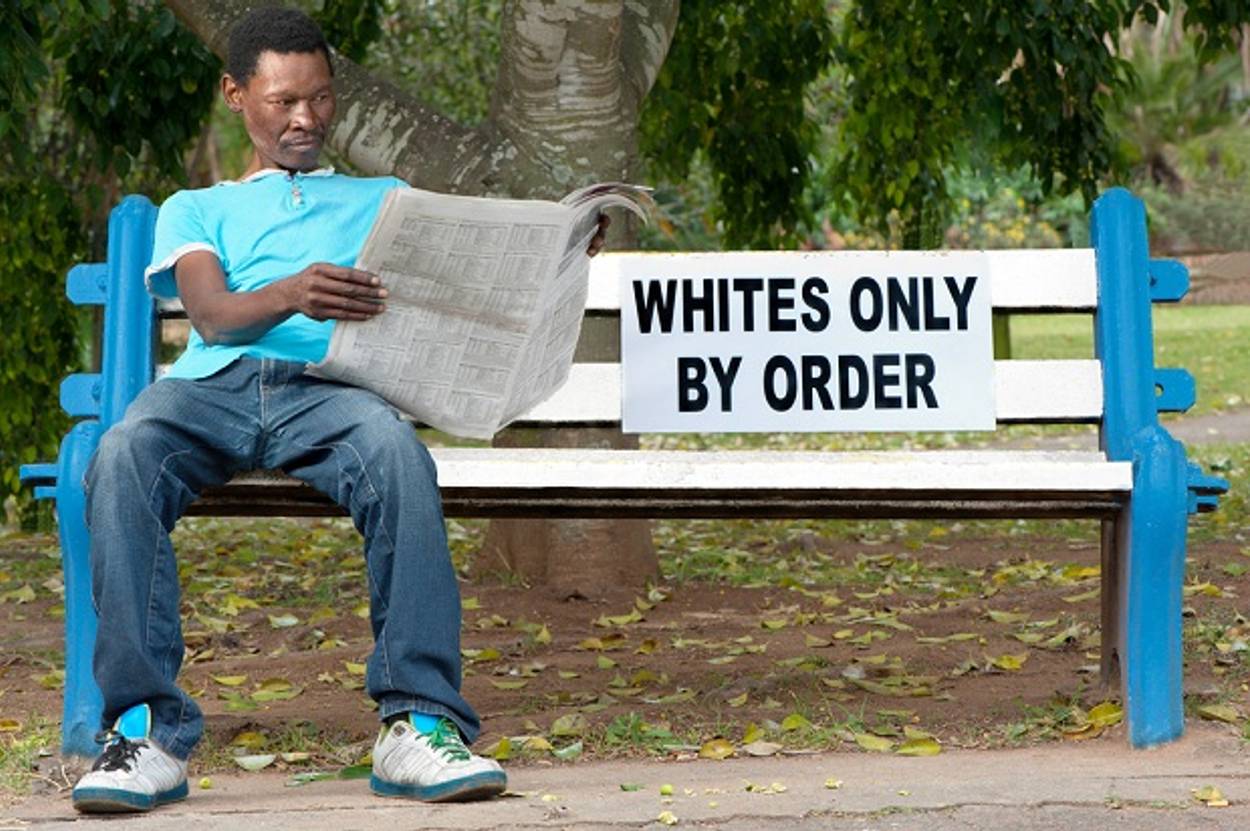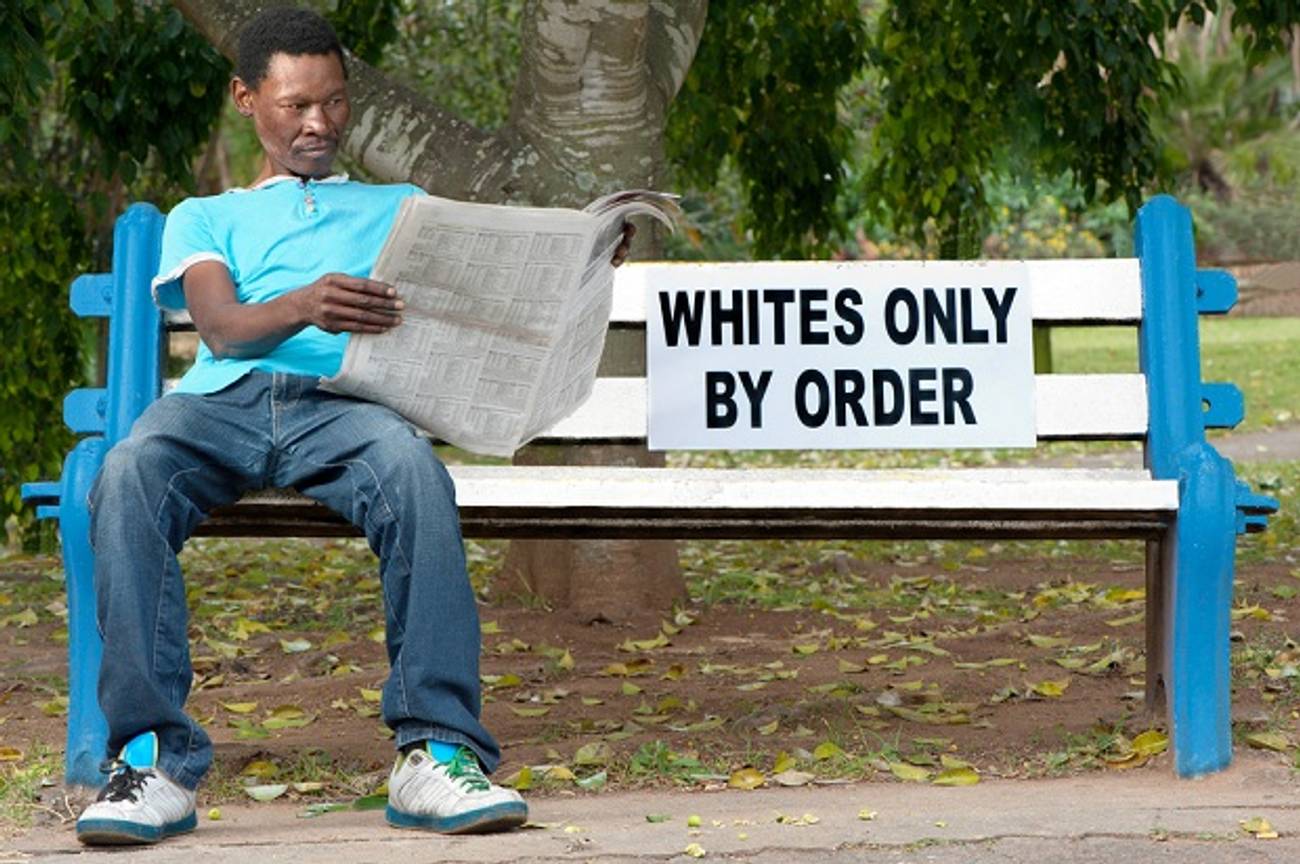What Are We Talking About When We Talk About Apartheid?
Kerry and others talk in terms of demographics, but it’s a question of rights




Secretary of State John Kerry’s remarks last week to the Trilateral Commission predicting Israel’s potential transformation into an “apartheid state” should it fail to reach a peace agreement with the Palestinians raised howls of protest from American Jewish leaders.
In Kerry’s defense, a number of commentators have pointed to Israeli leaders who have argued the same point, including Ehud Barak, Ehud Olmert and Tzipi Livni. Indeed, many genuine friends of Israel—of which Kerry is undoubtedly one—have warned of the apartheid scenario, doing so often in service of specifically deflecting claims that Israel is already an apartheid state. Let the peace process fester, these pro-Israel voices warn, and that calumny could one day become true. But is this admonition accurate?
The apartheid regime in South Africa consisted of a white minority ruling over a non-white majority, and it is this feature that those who invoke the specter of apartheid over Israel cite as evidence for their claim. If Israelis and Palestinians do not reach a two-state solution, they warn, then a Jewish minority will eventually rule over a non-Jewish majority in the area spanning from the Jordan River to the Mediterranean Sea. Jeffrey Goldberg quoted his own 10-year-old New Yorker article on this point:
By 2020, the Israeli demographer Sergio Della Pergola has predicted, Jews will make up less than forty-seven per cent of the population. If a self-sustaining Palestinian state—one that is territorially contiguous within the West Bank—does not emerge, the Jews of Israel will be faced with two choices: a binational state with an Arab majority, which would be the end of the idea of Zionism, or an apartheid state, in which the Arab majority would be ruled by a Jewish minority.
The problem with the logic is that relative population size has nothing to do with whether or not a system can be described as “apartheid.”
In Afrikaans, the word “apartheid” literally means “apart-ness,” or “the state of being apart,” and it describes the legalized system of racial discrimination imposed by South Africa’s National Party government that ruled the country uninterrupted from 1948 until 1994. Apartheid consisted of two forms. “Petty” apartheid encompassed the every day humiliations meted out to South African blacks and, to a lesser degree, mixed race and Indian people. Segregation in trains, buses and bathrooms, the prohibition of miscegenation and interracial marriage, and the imposition of pass laws that restricted movement, were just some of the legal measures undertaken to render non-white South Africans second-class citizens. “Grand apartheid,” meanwhile, was much more ambitious in its terrifying vision, aiming for the broad-scale separation of the races. Under this scheme, non-white South Africans living in areas designated for whites were forcibly removed to rural outposts, the eventual goal being the creation of “tribal homelands,” or “Bantustans,” nominally sovereign states that were in reality puppet governments whose pseudo-independence went unrecognized the world over.
Yet had South Africa been a majority white country, with the same discriminatory legal system in place, it would have been no less an apartheid state. And that is due simply to the fact that apartheid describes a system of laws, irrespective of the racial proportions of the population subject to them. That apartheid South Africa saw a white minority ruling over a black majority was merely an aggravating factor that made the shameful situation more pronounced. It mattered little to the plight of the individual black South African that those of his race outnumbered whites; even if whites had been more numerous, he would still be racially discriminated against, still not vote, still be denied certain jobs.
Let’s say, for the sake of argument, that the West Bank Arab population ballooned tomorrow from 2.5 million to 25 million, vastly exceeding the number of Jewish Israelis. By itself, this change in the proportion of Jews to Arabs would have no bearing whatsoever on whether Israel could be categorized as an “apartheid state,” because Israel has not annexed the occupied territories.
Israeli Arabs, as Goldberg himself notes, “have more rights as citizens than they have in most any Arab country.” The Arab-Israeli conflict could persist for decades, frankly, with the Palestinian population in the territories growing at an exponential rate, and it would still not affect the question of whether Israel is or is not an “apartheid state.” The entire argument about looming apartheid is premised on the idea that if the peace process fails, Israel will ultimately annex the territories without granting the Arabs living there citizenship.
That prospect is not entirely out of the question, since it is the goal of the settlement movement. But if annexation comes to pass, it wouldn’t matter whether there are more Arabs than Jews in the new, enlarged Israel; it would only matter how Israel decided to treat its new Arab citizens. At that point—and only at that point—would the apartheid comparison come into play, because Israel would then have to decide whether to extend the rights of today’s Israeli Arab citizens to everyone in the West Bank, or to continue enforcing occupation policies against people who were now citizens as well.
James Kirchick is a Tablet columnist and the author of Secret City: The Hidden History of Gay Washington (Henry Holt, 2022). He tweets @jkirchick.